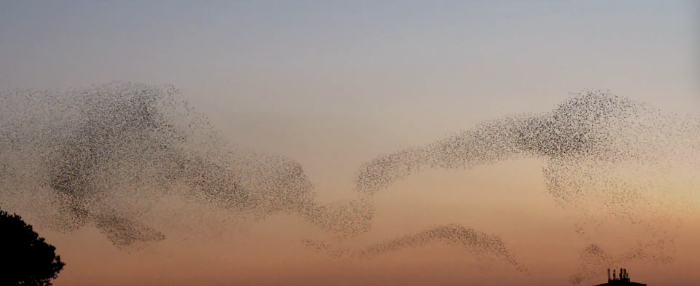Every generation our species distils the best of itself, packages it up and passes it on, shedding the dross and creating a fresher, newer, shinier generation. We have been doing this now for four billion years, and in doing so have transmogrified from unicellular microorganisms that do little more than cling to rocks and photosynthesize, to creatures of boundless energy and imagination who write poetry, make music, love each other and work hard to decipher the secrets of themselves and their universe.
And then they die.
Death is what makes this cyclical renewal and steady advance in organisms possible. Discovered by living things millions of years ago, aging and death permit a species to grow and flourish. Because natural selection ensures that the child-who-survives-to-reproduce is better than the parent (albeit infinitesimally so, for that is how evolution works), it is better for many species that the parent step out of the way and allow its (superior) child to succeed in its place. Put more simply, death stops a parent from competing with its children and grandchildren for the same limited resources. So important is death that we have, wired into our genes, a self-destruct senescence program that shuts down operations once we have successfully reproduced, so that we eventually die, leaving our children—the fresher, newer, shinier versions of ourselves—to carry on with the best of what we have given them: the best genes, the best art, and the best ideas. Four billion years of death has served us well.
Now, all this may be coming to an end, for one of the things we humans, with our evolved intelligence, are working hard at is trying to eradicate death. This is an understandable enterprise, for nobody wants to die—genes for wanting to die rarely last long in a species. For millennia, human thinkers have dreamed of conquering old age and death: the fight against it permeates our art and culture, and much of our science. We personify death as a spectre and loathe it, fear it and associate it with all that is bad in the world. If we could conquer it, how much better life would become.
Half a century ago that millennia-old dream began to take form, for we humans discovered genes, and within the genes we discovered that there are mechanisms for regulating aging and death, and we also discovered that we can engineer these genes—make them do things differently. We can add them, subtract them, alter their function, swap them between species—the possibilities are exciting and boundless. Having discovered the molecular mechanisms that regulate senescence and lifespan, we have begun to contemplate the possibility that we can alter the life course itself. We may be able to extend life, and possibly quite soon—it has recently been estimated that due to medical and technical advances, the first person to reach 150 years has already been born. Once we have eradicated cancer, heart disease, and dementia, our biggest killers, we can turn next to the body clock—the mechanism for winding-up operations that limits our lifespans—and alter that too. Why stop at 150? If a person is kept disease-free and the aging clock is halted, why could a person not reach 200? 300? 500?
What a wonderful idea. Few people seem to doubt that this is a wonderful idea and so research into aging and lifespan is a funding priority in every wealthy, technologically advanced society. Termed "healthy aging", this research really means prolonging life, for aging is by definition progressive time-dependent loss of health and function, and if we prevent that, we prevent death itself. Who wouldn't want to live to 500? To live a life free of decrepitude and pain, to be able to spend so much more time enjoying favourite activities, achieving so much, wringing every drop from mysterious but wonderful existence, seeing the growing up not just of one's children and grandchildren but also their children and grandchildren. Oh, yes please!
But wait. Our lifespan is our lifespan for a reason. Lifespans vary enormously in the biological world, from barely a day in the mayfly to more than 100 years in the Galapagos tortoise and an estimated 1500 years in the Antarctic sponge. These spans have been imprinted by natural selection because they are those that serve the species best—that maximise the trade-off between caring for and competing with one's offspring.
Most of us love our parents but imagine a world inhabited not only by your own parents but also everyone else's, and also your and their grandparents, and your and their great-grandparents... a society run by people whose ideas and attitudes date back four centuries. Imagine a world in which your boss might be in the post you covet for the next 100 years. Truly, would the generations be competing with each other: for food, housing, jobs, space. As it is, the young complain about how their elders, with their already rapidly increasing lifespans, are driving up house prices by refusing to downsize in middle age, and driving up unemployment by refusing to retire. Imagine four centuries of people ahead of you in the housing and job queues.
The prolonging of the human lifespan is often lauded in the media but it is almost never questioned. Nobody seems to doubt that we should push forward with aging research, identify those genes, tinker with them, make them work for us. For nobody wants to die, and so we all want this research to succeed. We want it for ourselves, and our families. We want ourselves and our loved ones to live as long as possible—forever, if we can.
But is it the best thing for our species? Have four billion years of evolution been wrong? We are not Antarctic sponges or blue-green algae—we die for a reason. We die so that our youth—those better versions of ourselves—can flourish. We should worry about the loss of death.
+
etc...

